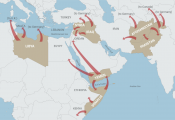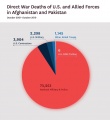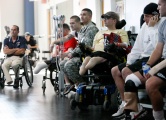Refugees & Health
The insecurity that refugees and internally displaced people (IDPs) face extends far beyond the guns and blasts of war. It includes lack of access to food, health care, housing, employment, and clean water and sanitation, as well as loss of community and homes. Forced displacement, especially...













